EM – In June 2022, the new regulation on fire resistance testing of elevator landing doors has replaced the old one. These seem to cause difficulties for businesses. How specifically?
In order to improve the effectiveness of fire prevention and fighting, many new regulations have been issued and have come into force in the last 2 years. Including Decree No. 136/2020/ND-CP, effective from January 10, 2021 and National Technical Regulation on fire prevention and fighting equipment (QCVN 03:2021/BCA), with Effective from June 28, 2022. Elevator Magazine will analyze the basics of these regulations.
Opinion from business
National Regulation QCVN 03:2021/BCA and Decree 136/2020/ND-CP (hereinafter referred to as Decree 136) have many changes compared to QCVN 06:2010/BXD and Decree 79/2014/ND-CP (Referred to as Decree 79).
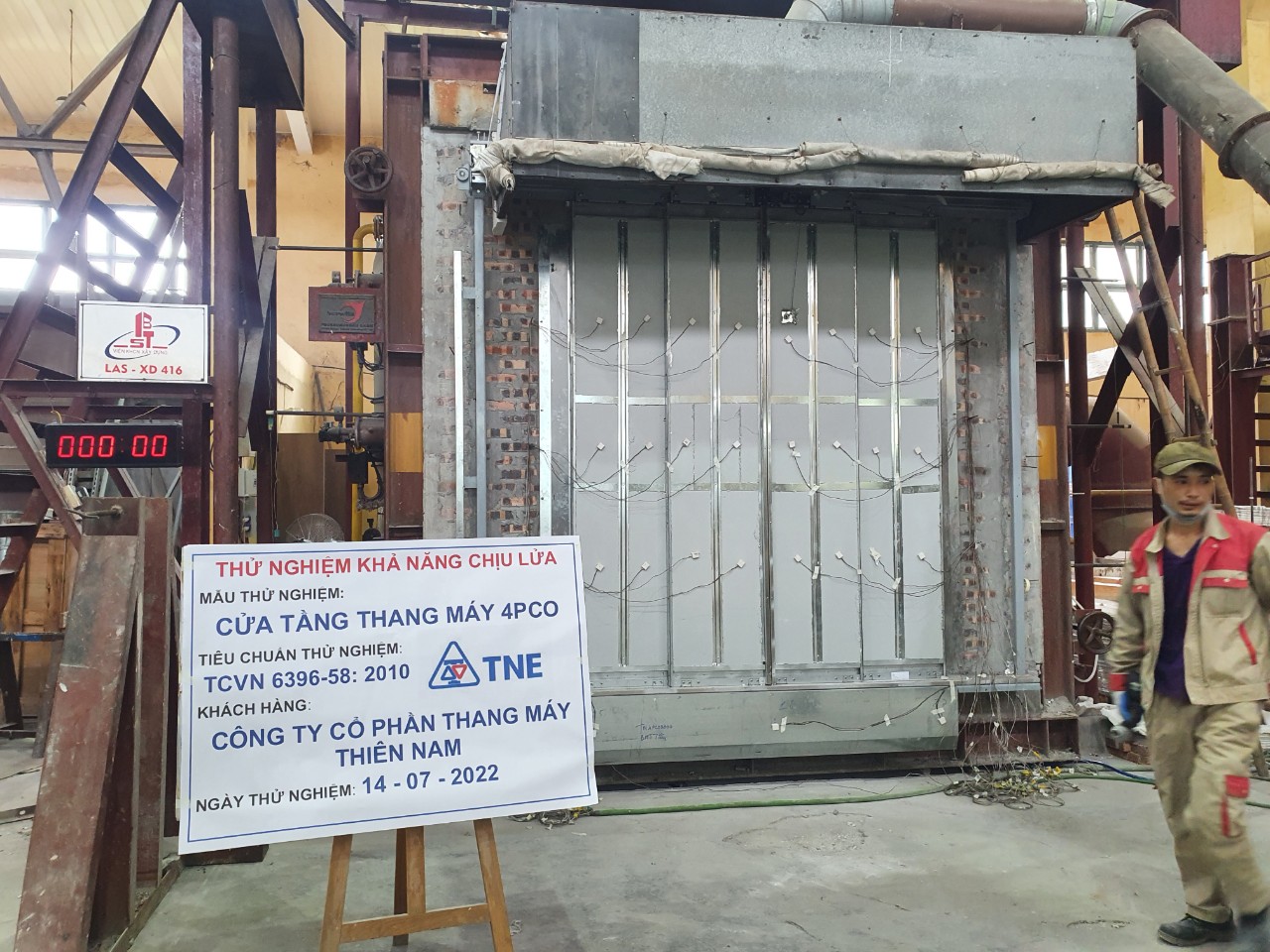
Fire-resistance test of elevator doors at the Fire Prevention Laboratory – Institute of Construction Structural Engineering – Ministry of Construction
Specifically, the fire-resistance test of elevator doors in the past often used test material samples with dimensions of 480 mm x 480 mm or according to production samples but without accessories. According to the assessment from the fire protection expert, it is actually just a material test, not for the whole set of doors.
The regulations in QCVN 03:2021/BCA require testing on a complete system, not just components. The new requirement is that the test piece be of the actual size or the largest size that can be accommodated in the furnace.
Representatives of some enterprises said that the previous test method was simple, easy to implement, less expensive and also effective. The application of new standards requires very specific requirements in terms of size, specifications, number of test samples, etc., so it is complicated and expensive.
In particular, regarding the number of test pieces, when the door is only exposed to heating from the outside of the landing door, only one test piece needs to be tested. However, a second test piece may also be required for structural verification of the door. “That is, when the structural method precludes a detailed examination of the specimen to ensure that there is no permanent damage or that the structural details cannot be assessed after testing, the laboratory must use the one of two options, where the requester shall supply a set of doors or a part of the door set in addition to the quantity required for the test. The laboratory shall then be free to choose which of these test specimens shall be subjected to the test and which shall be used for the structural inspection.”(1) This provision is deemed to be by the enterprise to troublesome and increases the cost of testing.”
Regarding the deadline, QCVN 03:2021/BCA states that the Certificate of Inspection is valid for samples of structures and components that have been sampled for testing by the unit requesting the issuance of the inspection certificate. After being granted an inspection certificate, the samples of structures and components will be used as samples for the production and import of products to be circulated on the market. The production and import unit is responsible for the quality of the product corresponding to the tested sample when it is put on the market and in accordance with relevant laws on product quality. However, the Certificate of Authenticity does not indicate the validity period of the sample testing. This is also a concern of some enterprises manufacturing and importing elevator doors in Vietnam.
In addition, there is also a limitation on the number of units with sufficient capacity to conduct testing to issue certification results. This number is only a few while the number of retests is very large, so it takes a lot of time for businesses to wait in line for their turn. Besides, the production unit has to calculate and edit the design for re-testing, which is very time consuming and costly if the testing process fails.
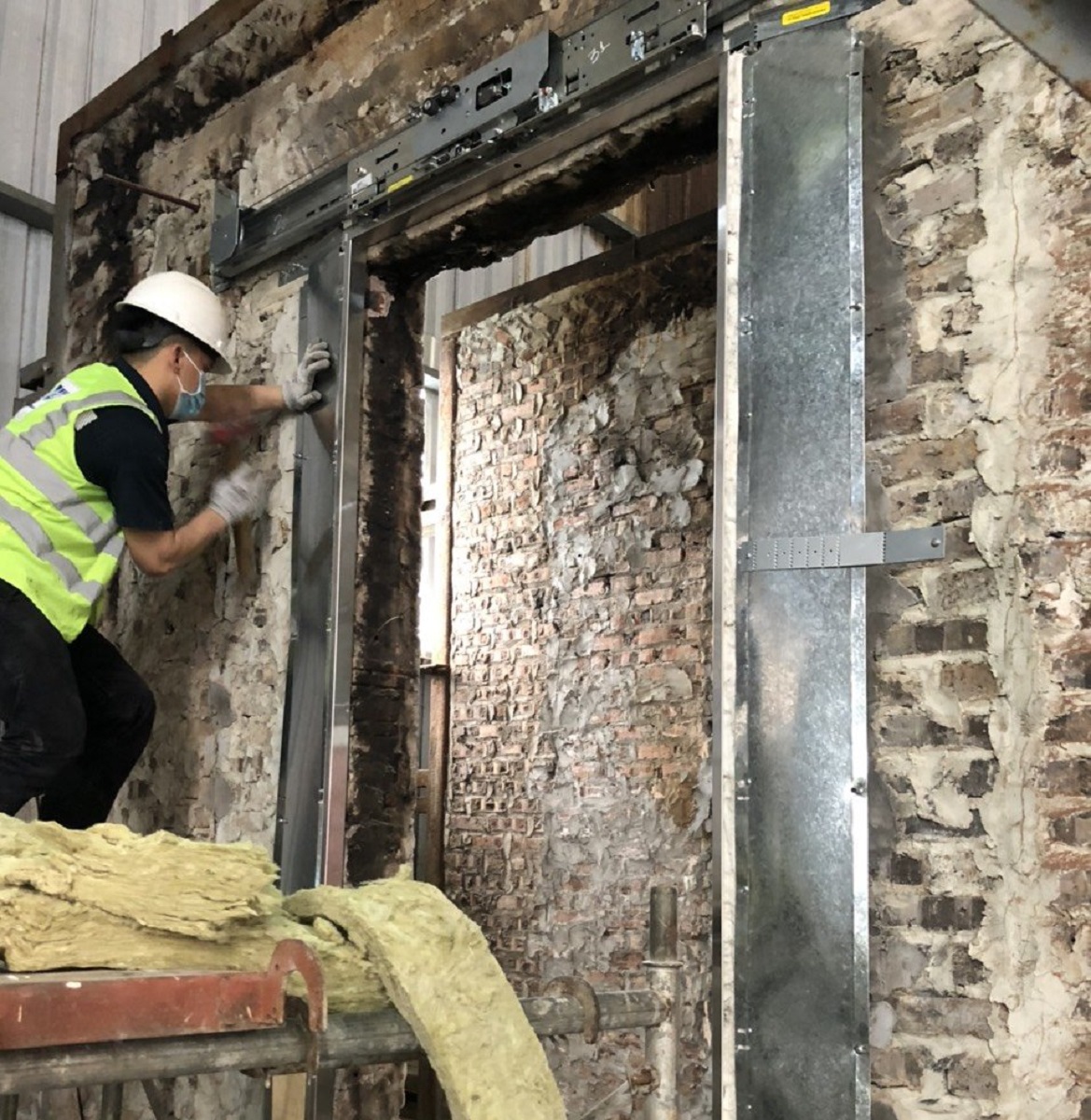
Testing the elevator door sample at the Research Center for Applied Science and Technology of Fire Prevention and Control – University of Fire Prevention and Fighting
What do experts say?
Dr. Nguyen Thanh Long – Director of the Research Center for Applied Science and Technology in Fire Prevention – University of Fire Prevention and Fighting – Ministry of Public Security shared with Elevator Magazine around the issue:
There have been more than 200 standards and regulations on fire prevention and rescue issued in Vietnam (2). In which, there are more than 70 standards regulating technical requirements for fire prevention and fighting vehicles and equipment. However, because the technical facilities are still backward and have not been completed, the testing according to the standards and regulations is not correct or suitable with the conditions of fire safety management in Vietnam. For a long time, only the Fire Prevention Laboratory – Institute of Construction Structural Engineering – Ministry of Construction was qualified to test the elevator door prototype according to international standards. The other testing facilities are only at the laboratory scale. (3) Therefore, QCVN 03:2021/BCA was issued to help the quality management of fire protection equipment in Vietnam be clear and transparent and in line with practical requirements, approaching international standards.
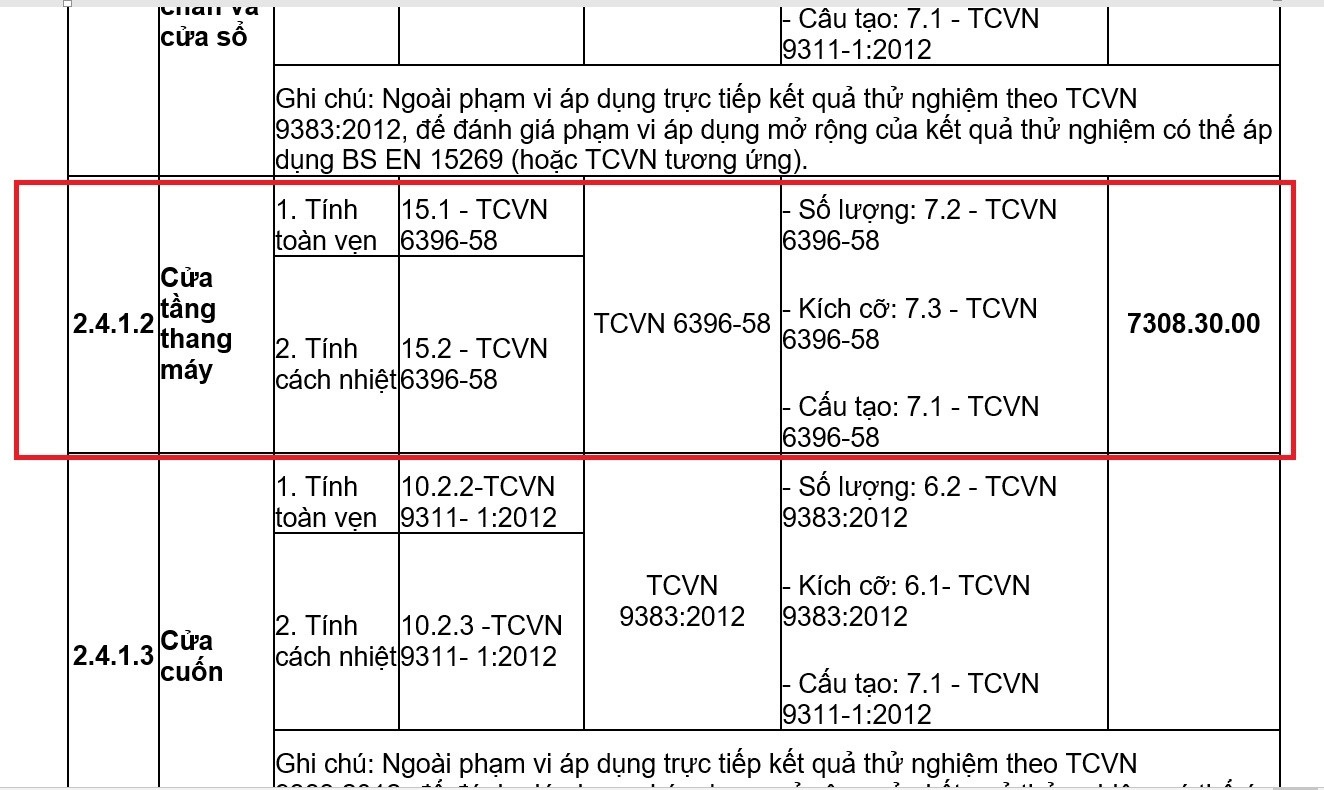
Regulations on fire protection testing for elevator landing doors in QCVN 03:2021
On the basis of the content of QCVN 03:2021/BCA, Colonel Nguyen Thanh Long shared about the concerns of businesses related to the testing process for elevator doors.
Firstly, at present, the number of laboratories eligible to test fire protection (referred to as Lab) for elevator doors is very small. Labs have very high requirements on facilities, especially specialized equipment for testing. In particular, the construction of the test furnace must comply with international standards and the very strict acceptance process of specialized agencies.
Secondly, in terms of human resources, testing facilities require experts with deep expertise, experience and, most importantly, proficient use of specialized technological equipment. In order to achieve such a level, it is necessary to have an in-depth knowledge of fire prevention and fighting, materials, structures, etc. To have such experts, we must send staff to train in countries with technology and high level in Europe.
According to Colonel Nguyen Thanh Long, reflections on the high test prices of enterprises are reasonable. However, if comparing similar testing prices in some countries, testing prices in Vietnam are still lower than the investment in facilities, equipment and human resources as mentioned above. Colonel Nguyen Thanh Long emphasized, according to QCVN 03:2021/BCA, all elevator doors imported or manufactured in the country must be tested for samples and issued certificates of inspection according to current regulations. This is what needs to be done to create equality in the inspection of domestically produced goods with imported goods.
As for expert Nguyen Van Binh, working at the Center for Consulting and Technology Transfer of Fire Prevention, Fighting and Rescue – Fire Prevention and Fighting Police Department, the current test standard for elevator doors is: TCVN 6396-58:2010 makes no distinction between domestically produced or imported products.
Currently, only integrity assessment (E – Integrity) is required for doors meeting E standard; integrity (E) and insulation properties (I – Insulation) for elevator landing doors require EI standards. Meanwhile, in some countries, in addition to assessing the integrity and insulation properties, additional limits of smoke and toxic gases are required to enter through the elevator landing door during the test.
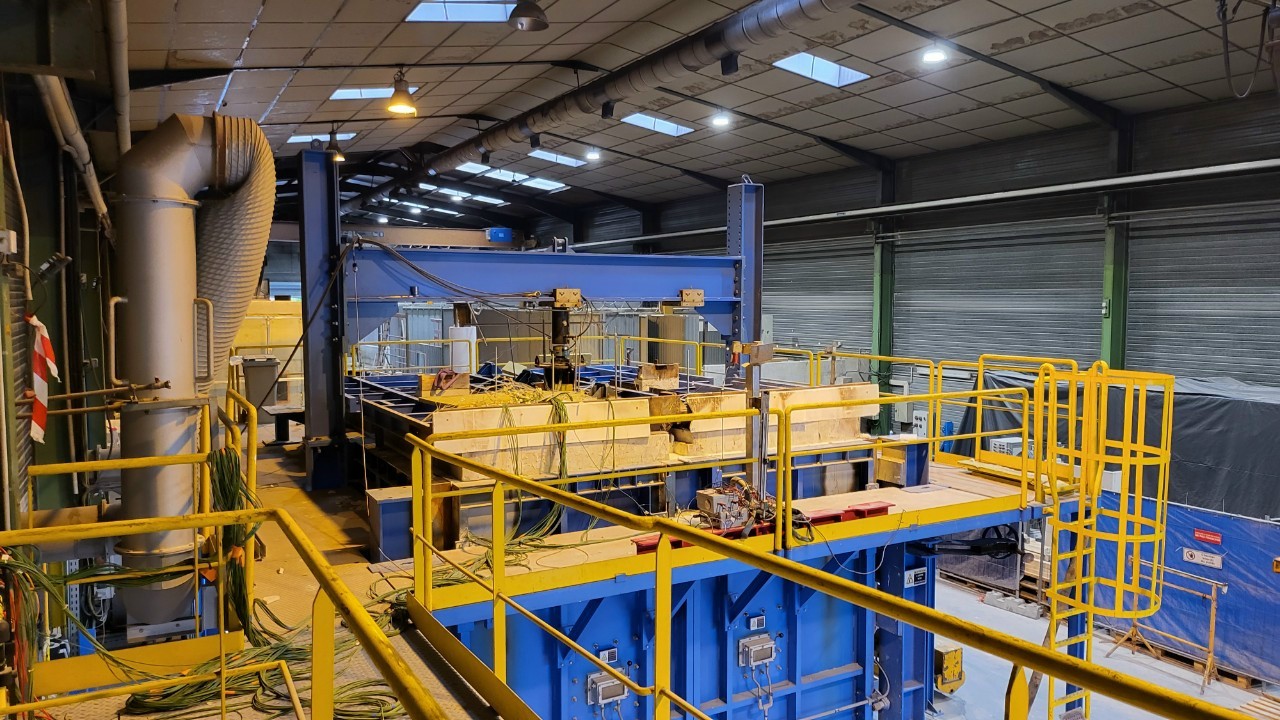
Fire protection testing center in the French Republic, where Vietnamese fire protection experts train
Regarding the “exceeding requirements”, that is, there are cases where the inspection records exceed the requirements of the works, causing costs for investors, the experts pointed out, the requirements for fire prevention and fighting testing at different levels. Levels for elevator doors are specified in QCVN 03:2021/BCA. However, the testing also has a related party design consultant. If the consultant is capable and experienced, they will carefully study the work, see where EI 30 is needed, where EI 60 or EI 120 is needed to make appropriate requirements. But there are also units or individuals, to be sure to be approved for fire protection conditions will require the elevator to meet the highest standard of EI 120, leading to the expense that the investment unit has to bear, causing waste.
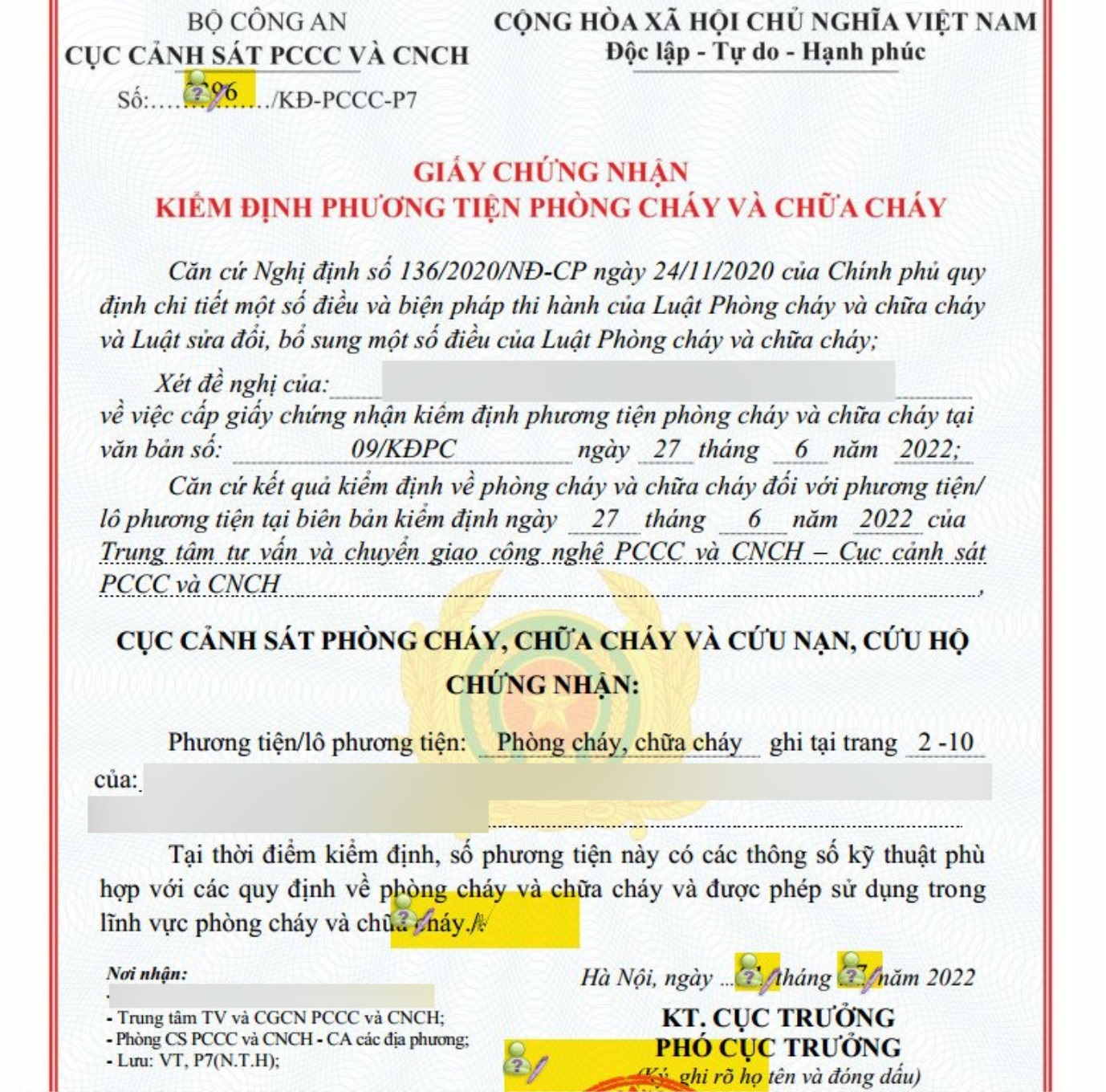
The certificate of fire protection inspection does not have an expiration date
For the recognition of test results of foreign products, Section 3.2 of QCVN 03:2021/BCA on “Acceptance of international and foreign test and inspection results” clearly states: “Fire prevention means if Vietnam has no prescribed standards or is not specified in this Technical Regulation, the Police Department for Fire Prevention, Fighting and Rescue shall base itself on test conditions according to ISO/IEC 17025 standard. – General requirements for the capacity of testing and calibration laboratories, consider using the test results of foreign organizations and agencies that have been licensed by the competent authorities of the host country for consideration and issuance of Certificates…”
According to experts of the Vietnam Elevator Association (VNEA), the new regulations on fire prevention and fighting standards have approached international standards, fundamentally overcoming the limitations of previously applied regulations. However, any policies and regulations issued must be synchronous and practical in life. And for new policies to be effective, specific guidelines are needed to avoid misunderstandings. In addition, management agencies also receive comments and feedback from implementing units in order to supplement, perfect, and effectively put the policy into practice.
Businesses are seen as the driving force of the economy. Therefore, only when this object is managed and supported by transparent mechanisms and policies, with specific guidelines, without causing troubles, costs, etc., will it bring about effects./.
Note:
(1) Quoting TCVN 6396-58:2010
(2) According to the General Department of Standards, Metrology and Quality
(3) Before the time of promulgation of QCVN 03:2021/BCA
Le Hung



